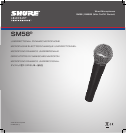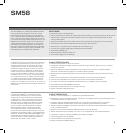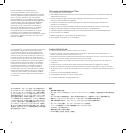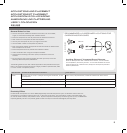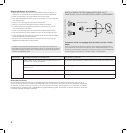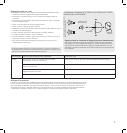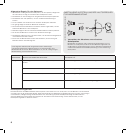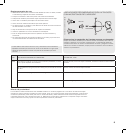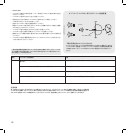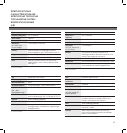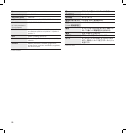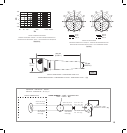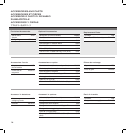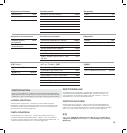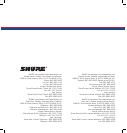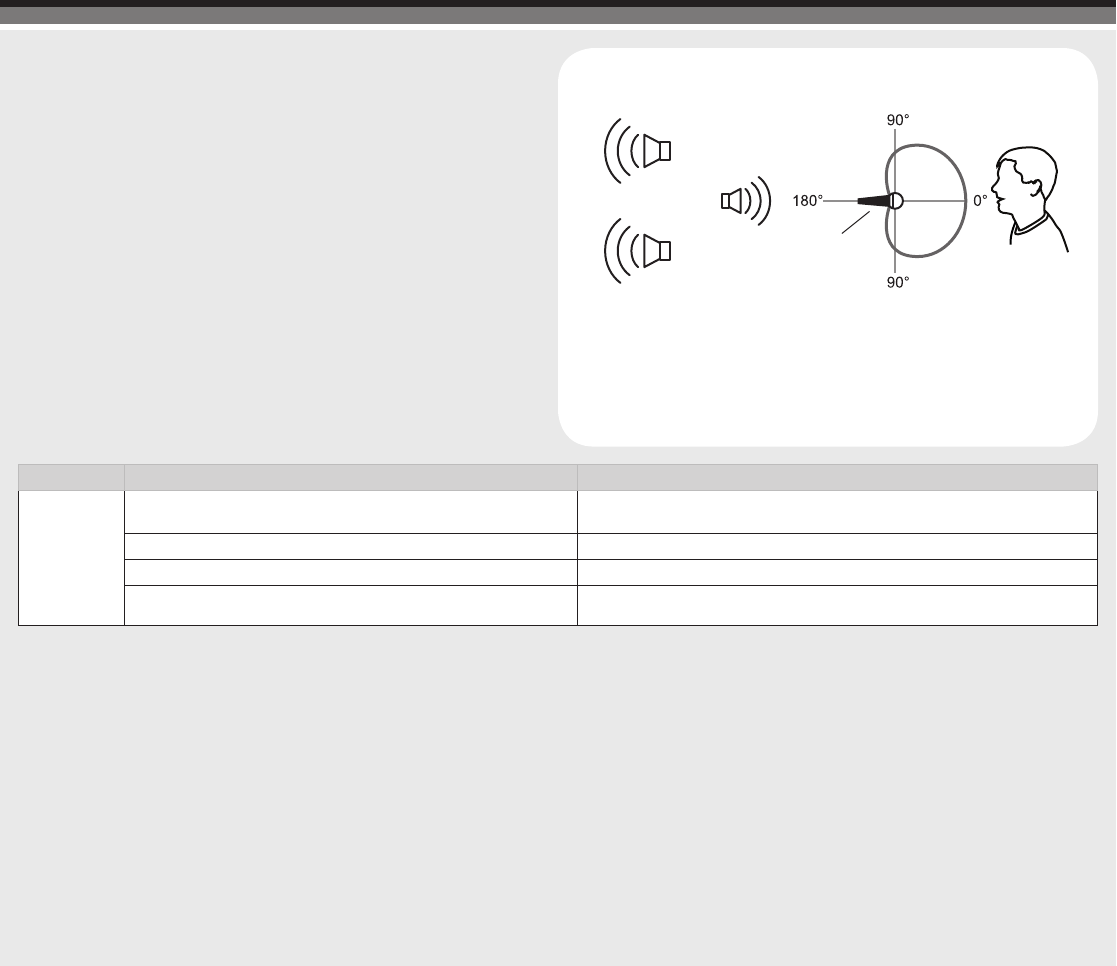
5
APPLICATIONS AND PLACEMENT
General Rules for Use
Aim the microphone toward the desired sound source (such as the talker, •
singer, or instrument) and away from unwanted sources.
Place the microphone as close as practical to the desired sound source. •
Work close to the microphone for extra bass response. •
Use only one microphone to pick up a single sound source. •
Use the fewest number of microphones as practical. •
Keep the distance between microphones at least three times the distance from •
each microphone to its source.
Place microphones as far as possible from reective surfaces. •
Add a windscreen when using the microphone outdoors. •
Avoid excessive handling to minimize pickup of mechanical noise and •
vibration.
Do not cover any part of the microphone grille with your hand, as this will •
adversely affect microphone performance.
APPLICATION SUGGESTED MICROPHONE PLACEMENT TONE QUALITY
Vocals Lips less than 15 cm (6 in.) away or touching the windscreen, on axis
to microphone.
Robust sound, emphasized bass, maximum isolation from other sources.
15 to 60 cm (6 in. to 2 ft.) away from mouth, just above nose height. Natural sound, reduced bass.
20 to 60 cm (8 in. to 2 ft.) away from mouth, slightly off to one side. Natural sound, reduced bass and minimal “s” sounds.
90 cm to 1.8 m (3 to 6 ft.) away. Thinner, distant sound; noticeable levels of ambient noise.
Avoiding Pickup of Unwanted Sound Sources
Place the microphone so that unwanted sound sources, such as monitors
and loudspeakers, are directly behind it. To minimize feedback and ensure
optimum rejection of unwanted sound, always test microphone placement
before a performance.
MONITOR
P.A. LOUDSPEAKER
Proximity Effect
The following table lists the most common applications and placement techniques.
Keep in mind that microphone technique is largely a matter of personal taste; there
is no one “correct” microphone position.
RECOMMENDED LOUDSPEAKER LOCATIONS FOR
CARDIOID MICROPHONES
Unidirectional microphones such as the SM58 progressively boost bass frequencies by 6 to 10 dB below 100 Hz when the
microphone is at a distance of about 6 mm (1/4 in.) from the sound source. This phenomenon, known as proximity effect, can
be used to create a warmer, more powerful sound. To prevent explosive low frequency sound during close-up use, the SM58 bass
response gradually rolls off. This provides greater control and helps the user take advantage of proximity effect.
APPLICATIONS ET PLACEMENT
APPLICAZIONI E COLLOCAZIONE
ANWENDUNG UND PLATZIERUNG
USOS Y COLOCACION
用途と配置
MICROPHONE
SOUND
SOURCE



